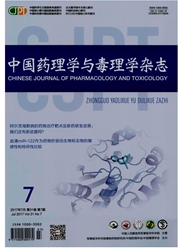

 中文摘要:
中文摘要:
鉴于目前中药毒性研究主要存在的体外评价不能全面真实地反映机体状态、传统的检查方法对毒性早期评价不敏感和毒性评价指标不能综合判断中药配伍是否致毒、增毒的问题,本文通过构建"毒性整体早期评价筛选-验证及优化-应用"的中药靶器官毒性早期评价的研究方法,主要包括基于代谢动态指纹谱对靶器官毒性整体早期评价生物标志物的筛选、优化和验证、生物学意义的阐释以及在中药配伍禁忌中的应用等研究内容,试图寻找敏感的、先于常规生化指标变化的靶器官毒性早期评价生物标志物。通过分析"十八反"配伍组合作用于整体动物后生物标志物的变化规律,发现黑顺片具有心脏毒性,半夏、瓜蒌、贝母、白蔹以及白芨均无心脏毒性,反药配伍组合后均产生心脏毒性且相较黑顺片单味药毒性均有所增加,明确回答"半蒌贝蔹及攻乌"中药配伍前后是否致毒、增毒的科学问题。
 英文摘要:
英文摘要:
Currently, the toxicity study of traditional Chinese medicine is faced with the following problems. Firstly, the evaluation in vitro cannot fully reflect the true state of the body. Secondly, the traditional method is not sensitive enough to the early toxicity. Lastly, the toxicity evaluation indexes cannot determine whether the compatibility of traditional Chinese medicine produces toxicity or increases toxicity systematically. The paper proposed a synthesized early evaluation research method for target organ toxicity induced by traditional Chinese medicine: screening, validation, optimization and application. This method mainly inoolves early target organ toxicity biomarkers in screening, optimi- zation, validation, biological significance explanation, and application to the traditional Chinese medicine incompatibility based on the metabolic dynamic fingerprint spectrum in order to obtain biomarkers of target organ toxicity that are sensitive and precede conventional biochemical indices for early evaluation. We attempted to analyze the pattern of chang of the biomarkers for animals acted by "18 incompatible medicaments" compatibility combination. We found that Radix Aconiti Lateralis Preparata with cardiotoxicity were compatible with Rhizoma Pinelliae, and that Trichosanthes kirilowii Maxim, Fritillaria, Ampelopsis Radix and Bletilla striata without non-cardiotoxicity produced and increased cardiotoxicity systematically.
 同期刊论文项目
同期刊论文项目
 同项目期刊论文
同项目期刊论文
 期刊信息
期刊信息
